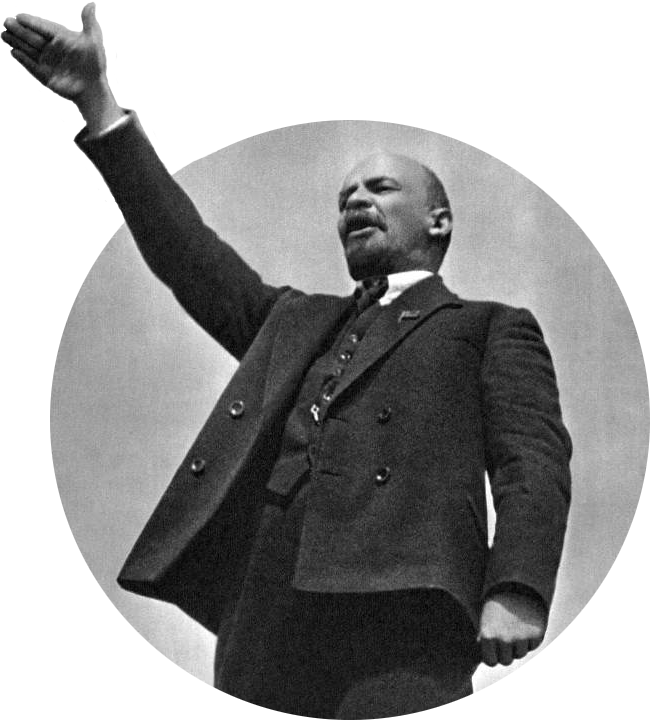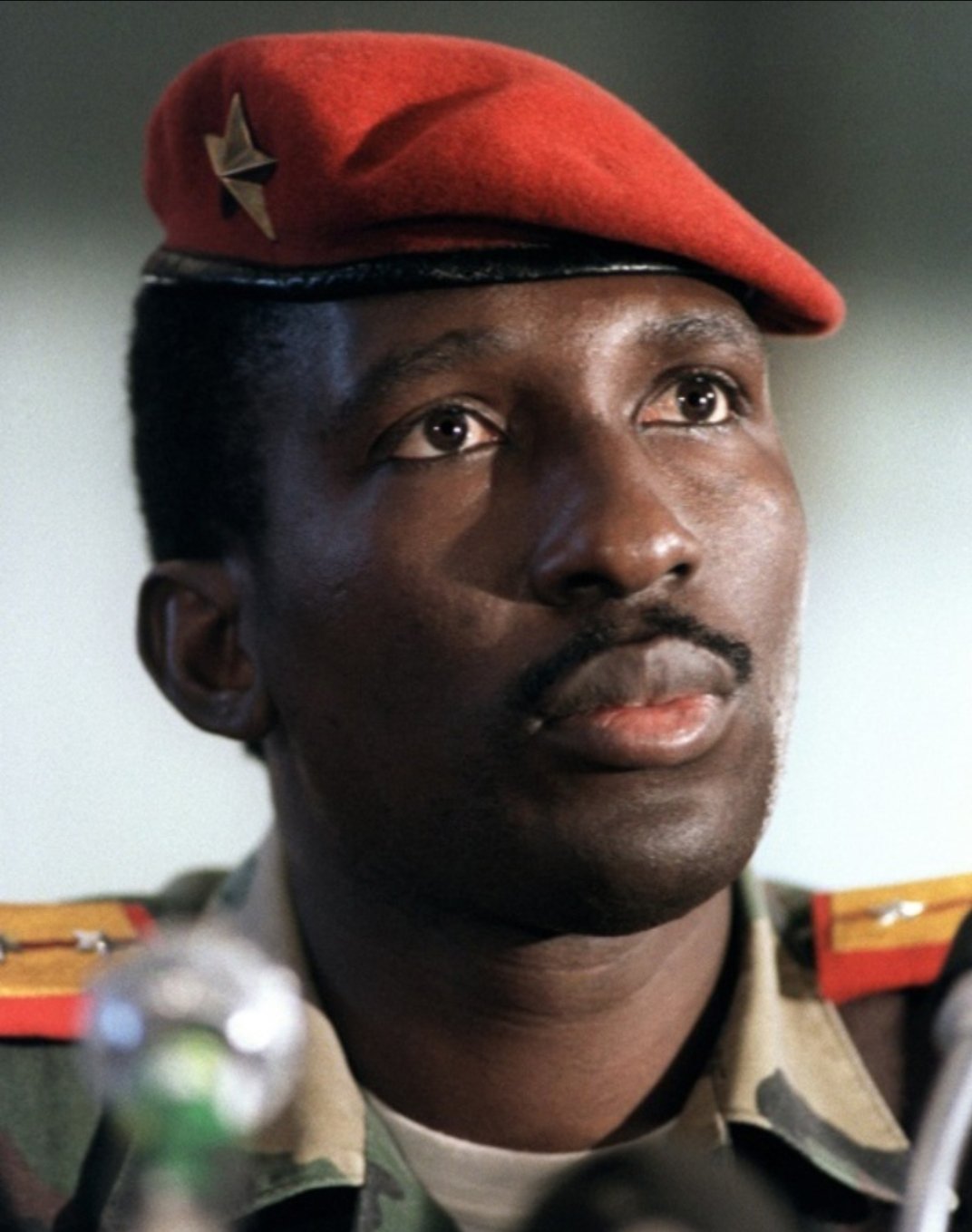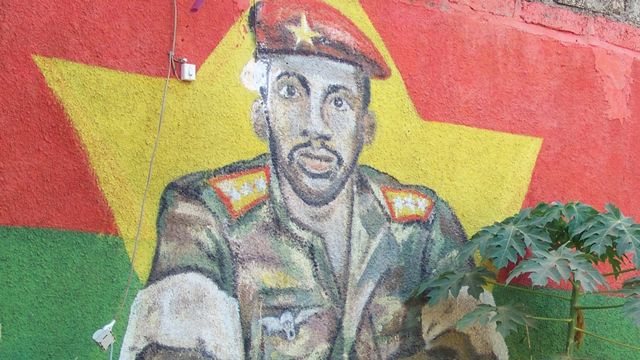More languages
More actions
m (→Assassination) Tag: Visual edit |
m (→Assassination) Tag: Visual edit |
||
| Line 41: | Line 41: | ||
== Assassination == | == Assassination == | ||
On 15 October 1987, shortly after Sankara began a meeting with a cabinet, a group of soldiers including Compaoré, future Defense Minister [[Guengère]], and future head of state [[Gilbert Diendéré]], rushed into the room. Compaoré then shot and killed Sankara.<ref name=":0">{{Web citation|author=Jeremy Kuzmarov|newspaper=[[CovertAction Magazine]]|title=This Man Pulled the Trigger, But Did the CIA and DGSE Put the Idea in His Head and the Gun in His Hand?|date=2022-04-29|url=https://covertactionmagazine.com/2022/04/29/this-man-pulled-the-trigger-but-did-the-cia-and-dgse-put-the-idea-in-his-head-and-the-gun-in-his-hand/|archive-url=https://web.archive.org/web/20241116064951/https://covertactionmagazine.com/2022/04/29/this-man-pulled-the-trigger-but-did-the-cia-and-dgse-put-the-idea-in-his-head-and-the-gun-in-his-hand/|archive-date=2024-11-16}}</ref> | On 15 October 1987, shortly after Sankara began a meeting with a cabinet, a group of soldiers including Compaoré, future Defense Minister [[Guengère]], and future head of state [[Gilbert Diendéré]], rushed into the room. Compaoré then shot and killed Sankara and twelve of his associates. [[Halouna Traoré]] was the only survivor.<ref name=":0">{{Web citation|author=Jeremy Kuzmarov|newspaper=[[CovertAction Magazine]]|title=This Man Pulled the Trigger, But Did the CIA and DGSE Put the Idea in His Head and the Gun in His Hand?|date=2022-04-29|url=https://covertactionmagazine.com/2022/04/29/this-man-pulled-the-trigger-but-did-the-cia-and-dgse-put-the-idea-in-his-head-and-the-gun-in-his-hand/|archive-url=https://web.archive.org/web/20241116064951/https://covertactionmagazine.com/2022/04/29/this-man-pulled-the-trigger-but-did-the-cia-and-dgse-put-the-idea-in-his-head-and-the-gun-in-his-hand/|archive-date=2024-11-16}}</ref> | ||
Compaoré immediately reversed the nationalizations, overturned nearly all of Sankara's policies, rejoined the International Monetary Fund and [[The World Bank|World Bank]] to bring in "desperately needed" funds to restore the "shattered" economy and ultimately spurned most of Sankara's legacy. Compaoré's [[dictatorship]] remained in power for 27 years until it was overthrown by popular protests in 2014. This has led many to suspect foreign involvment in the coup, particularly from the French government. | Compaoré immediately reversed the nationalizations, overturned nearly all of Sankara's policies, rejoined the International Monetary Fund and [[The World Bank|World Bank]] to bring in "desperately needed" funds to restore the "shattered" economy and ultimately spurned most of Sankara's legacy. Compaoré's [[dictatorship]] remained in power for 27 years until it was overthrown by popular protests in 2014. This has led many to suspect foreign involvment in the coup, particularly from the French government. | ||
Latest revision as of 14:28, 27 December 2024
 | Some parts of this article were copied from external sources and may contain errors or lack of appropriate formatting. You can help improve this article by editing it and cleaning it up. (November 2021) |
Thomas Sankara | |
|---|---|
 Portrait of Comrade Sankara | |
| Born | Thomas Isidore Noël Sankara 21 December 1949 Yako, Upper Volta |
| Died | 15 October 1987 Ouagadougou, Burkina Faso |
| Cause of death | Assassination |
| Nationality | Burkinabé |
| Political orientation | Marxism–Leninism African socialism Pan-Africanism Anti-imperialism |
Thomas Isidore Noël Sankara, generally known as Thomas Sankara, was a Burkinabé Marxist–Leninist military officer, revolutionary and political leader who was President of Burkina Faso from 1983 until his assassination in a counter-revolution in 1987. He was often referred to as the "Che Guevara of Africa".[1][2][3][4]
In 1983, Sankara seized power in a military coup d'état, the August Fourth Revolution, and set about eliminating corruption and the influence of the former French colonial empire. This was widely supported by the people.[citation needed] After taking office, Sankara, a socialist and Pan-Africanist, immediately launched a plan to try social and economic changes on the African continent.
One such social change is that he led his country in changing the French colonial name of "Upper Volta" to "Burkina Faso" ("Land of Incorruptible People") to symbolize the country's autonomy and rebirth.[5]
Sankara's foreign policy centered on anti-imperialism and avoidance of imperialist foreign aid and interference, mainly by the International Monetary Fund and the World Bank. It also promoted the reduction of foreign debt.[citation needed]
Sankara's domestic policies focused on eradication of famine with food self-sufficiency, and land reform. His government gave emphasis to education and public health, carried out literacy campaigns across the country and vaccinated 2.5 million children free of charge. His government also carried out greening projects to curb the growing desertification in the Sahel and advocated women's liberation and freedom, and improvements of women's social status. Sankara performed this work along with the nationalization of land and mineral resources.[citation needed]
In order to achieve radical social changes, he set the premises for a dictatorship of the proletariat which suppressed bourgeois interests, banned trade unions (who were reactionary and a tool of the bourgeoisie in Burkina Faso), and punished corrupt officials and counter-revolutionaries through the People's Revolutionary Courts. He publicly admired Fidel Castro's Cuban Revolution.[citation needed]
He was assassinated by his close friend Blaise Compaoré, with possible involvement from the French government and the CIA. A week before his assassination, Sankara declared: "While revolutionaries as individuals can be murdered, you cannot kill ideas".[6]
Policies[edit | edit source]

In his 4 years as President of Burkina Faso, Sankara conducted a policy of anti-imperialism aimed at restoring sovereignty over his country. This began by calling out the International Monetary Fund and their African loans as imperialism, and calling for a pan-African socialist union.
He also led extensive national campaigns, some of which include:
- broke out the patriarchal model of Burkinabé society
- vaccinated 2.5 million children against meningitis, yellow fever and measles
- prevented desertification of the Sahel
- stopped governmental corruption, which was widespread before him
He notably said that "a soldier without political education is only a potential criminal", and he undertook to reform the military into a revolutionary corps that would protect Burkina Faso from foreign imperialist threats. Notably, soldiers were put to work in building much-needed infrastructure such as wells, irrigation fields, or brick houses in the many villages of Burkina Faso. The people living in those villages were also tasked with building their own infrastructure so as to integrate them into the process and make them understand that the government is doing this for them and with them.
Assassination[edit | edit source]
On 15 October 1987, shortly after Sankara began a meeting with a cabinet, a group of soldiers including Compaoré, future Defense Minister Guengère, and future head of state Gilbert Diendéré, rushed into the room. Compaoré then shot and killed Sankara and twelve of his associates. Halouna Traoré was the only survivor.[7]
Compaoré immediately reversed the nationalizations, overturned nearly all of Sankara's policies, rejoined the International Monetary Fund and World Bank to bring in "desperately needed" funds to restore the "shattered" economy and ultimately spurned most of Sankara's legacy. Compaoré's dictatorship remained in power for 27 years until it was overthrown by popular protests in 2014. This has led many to suspect foreign involvment in the coup, particularly from the French government.
Investigation[edit | edit source]
The results of Sankara's autopsy were finally released in 2015 and showed that Sankara had been shot with his hands up.[7]
In February 2020, French member of parliament André Chassaigne (PCF) formally asked to open a commission of inquiry into Sankara's death and France's possible involvement.[8]
In 2021, a trial was started against Blaise Compaoré (then in exile). In April 2022, a verdict was rendered and Compaoré was found guilty of "attack on state security", "concealment of a corpse" "and complicity in a murder". He was sentenced to life in prison along with two more accomplices.[9]
References[edit | edit source]
- ↑ Burkina Faso Salutes "Africa's Che" Thomas Sankara by Mathieu Bonkoungou, Reuters, 17 October 2007
- ↑ Thomas Sankara Speaks: the Burkina Faso Revolution: 1983–87, by Thomas Sankara, edited by Michel Prairie; Pathfinder, 2007, pg 11
- ↑ "Thomas Sankara, Africa's Che Guevara" by Radio Netherlands Worldwide, 15 October 2007.
- ↑ "Africa's Che Guevara" by Sarah in Burkina Faso.
- ↑ Hubert Jules Deschamps (2023-06-05). "Burkina Faso" Encyclopedia Britannica. Archived from the original on 2019-04-09.
- ↑ https://www.reuters.com/assets/print?aid=USL17577712 Burkina Faso Salutes "Africa's Che" Thomas Sankara] by Mathieu Bonkoungou, Reuters, 17 October 2007.
- ↑ 7.0 7.1 Jeremy Kuzmarov (2022-04-29). "This Man Pulled the Trigger, But Did the CIA and DGSE Put the Idea in His Head and the Gun in His Hand?" CovertAction Magazine. Archived from the original on 2024-11-16.
- ↑ http://www.thomassankara.net/french-mp-demands-inquiry-into-murder-of-burkina-faso-president-sankara/?lang=en
- ↑ "Former president Compaoré sentenced to life in Sankara trial" (2022-04-06). Africa News.
